A Comprehensive Guide to Choosing the Right Industrial Label Printer

What is an Industrial Label Printer?
An industrial label printer is a thermal transfer or direct thermal printer designed to create durable safety labels, signs, and inventory markers. These labels improve compliance with OSHA/ANSI standards, reduce accidents, and streamline workflows across industrial facilities. As workplaces evolve and regulations tighten, selecting the right industrial label printer, like the DuraLabel Kodiak Max Industrial Sign and Label Print System, becomes paramount. Let’s explore the world of industrial labeling, look at its applications across industries, and offer guidance on choosing the perfect printer to safeguard your workforce and streamline operations.
What Are Industrial Safety Labels?
Industrial safety labels are durable signs and markings that withstand harsh environments while communicating hazards, equipment instructions, and safety protocols. They serve as the foundation of compliance and efficiency by helping organizations meet OSHA and ANSI standards while protecting workers from harm.
Industrial safety labels serve as the linchpins of safety and efficiency in the modern workplace. Durable labels and signs that withstand harsh environments convey vital information, organize inventory, and maintain compliance with safety regulations.
Clear and concise communication is essential to ensure the safety of all personnel in a visual factory. Industrial label printers, also referred to as a thermal transfer label printer or direct thermal printer, enable organizations to create labels and signs that communicate crucial information such as safety protocols, hazard warnings, equipment instructions, and emergency procedures. Whether it's identifying potential hazards or providing instructions for safe operation, these safety labels play a pivotal role in keeping workers informed and aware of their surroundings.
Efficient inventory management is vital for the smooth operation of any industrial facility. A thermal transfer label printer allows organizations to categorize, track, and identify inventory items with ease. Whether it's labeling storage bins, shelves, or individual products, these printers help:
- Streamline inventory processes
- Reduce errors
- Improve overall efficiency
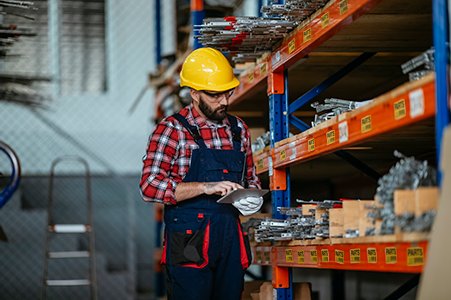
Organizations can minimize the risk of inventory mix-ups and improve workflow productivity when items are properly labeled and easily identifiable.
Industrial label printers play a crucial role in helping organizations maintain compliance with various safety regulations, including those set forth by organizations such as Occupational Safety and Health Administration (OSHA) and American National Standards Institute(ANSI). These printers help ensure that workplaces are safe and compliant with applicable laws and regulations by producing clear and visible warning labels that adhere to regulatory requirements.
In addition to promoting safety, label printers also contribute to overall workplace efficiency. By providing organizations with the ability to create custom labels and signs on-demand, these printers eliminate:
- The need for manual labeling processes
- Reduce downtime
- Improve operational efficiency
Whether it's labeling equipment, marking aisles, or creating signage for facility navigation, these printers help organizations streamline processes and improve productivity.
How Are Industrial Label Printers Used Across Different Industries?
Industrial label printers are used across manufacturing, construction, healthcare, warehousing, and food processing to create compliant safety signs, wayfinding markers, and hazard communication labels. Their versatility makes them essential for nearly every industrial environment.
In the labyrinth of industrial environments, where safety reigns supreme, the application of a thermal transfer label printer stretches far and wide, spanning across various industries. From manufacturing plants to healthcare facilities, these printers play a pivotal role in enhancing safety, efficiency, and compliance. No matter your industry, the correct application of safety visual communication is a key component of your safety program.
Manufacturing: Ensuring Safety and Compliance
Label printers serve as guardians of safety, producing labels and signs that identify machinery, warn of potential hazards, and provide crucial instructions for safe operation. By ensuring clear and visible communication, these printers help mitigate risks, prevent accidents, and maintain compliance with regulatory standards such as those set forth by OSHA and ANSI.
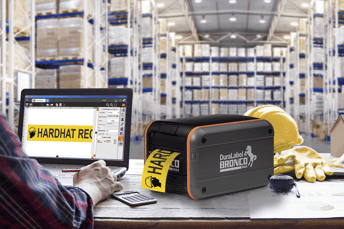
Warehousing and Logistics: Streamlining Inventory Management
Efficient inventory management lies at the heart of smooth warehouse operations. A thermal transfer label printer facilitates this process by providing the means to create clear and informative labels for categorizing, tracking, and identifying inventory items. Whether it's labeling storage bins, shelves, or individual products, these printers optimize workflow, reduce errors, and enhance overall efficiency. Organizations can minimize the risk of inventory mix-ups and streamline inventory processes by ensuring that items are properly labeled and easily identifiable.
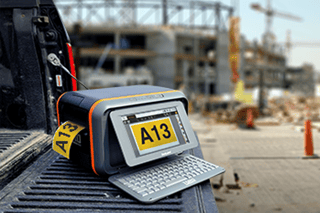
Construction: Safeguarding Workers on the Job Site
Construction sites are dynamic environments fraught with potential hazards. Industrial label printers play a vital role in safeguarding workers by enabling the creation of clear and visible safety signage. These printers help mitigate risks and prevent accidents on the job site, which often include warning of hazardous areas and notifying workers of safe work practices. By empowering organizations to communicate crucial information effectively, these robust printers contribute to a safer and more secure workplace in the construction industry.

Healthcare: Promoting Patient Safety and Compliance
Patient safety is of utmost importance in hospitals and medical facilities. Label printers support this goal by producing durable labels for medical equipment, medication, and patient records. These printers play a critical role in promoting patient safety and regulatory compliance that range from identifying equipment to ensuring proper medication management. Sign printers help healthcare organizations maintain high standards of safety and quality of care by producing clear and legible labels that withstand the rigors of healthcare environments.
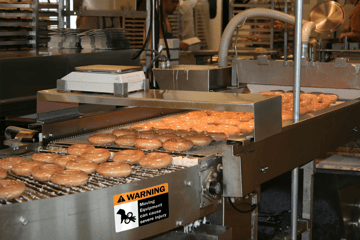
Food Processing: Meeting Hygiene Standards and Regulatory Requirements
Food processing facilities operate under strict regulations to ensure food safety and hygiene. Industrial label printers, such as the DuraLabel Kodiak Max, offer specialized labeling solutions designed to withstand wash-downs, resist contamination, and comply with regulatory requirements. From labeling food products to marking processing equipment, these printers help maintain hygiene standards and ensure compliance with regulations set forth by organizations such as the Food and Drug Administration (FDA) and the United States Department of Agriculture (USDA).
Wayfinding: Instant Communication for Every Facility
Any type of facility can benefit from effective wayfinding. Signs, lines, and labels that direct workers and visitors through the facility with simple, easily accessible information. This extends to emergency exit procedures, hazard zones, and vehicle traffic areas. Glow-in-the-dark signs and labels are especially important for identifying evacuation routes and exits in a power outage.

Enhancing Safety Across Industries
Sign printers are versatile tools that transcend industry boundaries, addressing unique safety challenges in diverse environments. These printers play a pivotal role in promoting safety, efficiency, and compliance that range from manufacturing to healthcare. These capable printers help create safer and more secure workplaces for employees across various industries by providing organizations with the means to create clear and informative OSHA compliant labels and signs.
Why Should Facilities Choose an Industrial Label Printer Over Standard Printers?
Facilities should choose industrial label printers because they are built for durability, regulatory compliance, and efficiency—qualities that inkjet or office printers cannot match. Industrial printers are designed to withstand harsh conditions while producing labels that last.
With so many industries in need of reliable communication, it's important to have the right printer for the job. Choosing an industrial label printer over other types of printers, like inkjet printers, offers distinct advantages in durability, versatility, and compliance. Unlike inkjet printers, which may not withstand an industrial environment, industrial label printers are built to endure harsh conditions while creating durable labels for pipes, safety signs, and equipment. With features like thermal transfer printing and a wide range of materials, industrial printers ensure clear and long-lasting labels that meet regulatory standards. This reliability enhances efficiency and safety, making industrial label printers the top candidate for any facility requiring reliable and compliant labeling solutions.
What Is the Difference Between Industrial Thermal Printers and Inkjet Printers?
The key difference is that thermal printers use heat-based technology to create durable, long-lasting labels, while inkjet printers spray ink onto paper for temporary or office-based applications.
Businesses around the world rely on printers every day to print all manner of items, including contracts, receipts, asset management tags, and more. It's essential that businesses understand and choose the right sign and labeling printer for their specific needs. An inkjet printer, for instance, may print high-quality photos but lacks the capabilities to quickly and easily print barcode labels.
Understanding How Inkjet Printers Work
Inkjet printers use ink to print text, graphics, and images on various paper types. They operate by spraying thousands of ink droplets onto paper, blending colors to create sharp, photo-realistic images. Print resolution, measured in dots per inch (DPI), determines image clarity, with higher DPI producing finer details and sharper output.
What are the Advantages and Disadvantages of an Inkjet Printer?
Inkjet printers offer high-quality printers at a lower cost. These prints are less durable due to them being ink-based. This leads to smudging and fading over a short period of time. Additionally, inkjet printers have more moving parts than thermal printers, which increases maintenance costs and reliability concerns for any printed materials.What is a Thermal Label Printer?
A thermal label printer uses heat to transfer pigment from a ribbon or activate heat-sensitive material, creating durable and compliant labels. This makes them ideal for safety labeling, inventory management, and compliance-driven applications.
Unlike inkjet printers, thermal printers don't spray liquid ink through a nozzle to produce images. Rather, thermal printers use tiny heating elements to activate or transfer pigments.
Industrial thermal printers are used most commonly to create labels, safety signs, wayfinding markers, barcode labels, shipping labels, and other heavily used items.
How do Thermal Printers Work?
Two primary technologies dominate the industrial labeling landscape: thermal transfer and direct thermal printing.
- Thermal Transfer Printing: This technology uses a heated print head to transfer ink from a ribbon onto the label material. It offers excellent durability, making it suitable for applications requiring durable labels that can withstand harsh environments and exposure to chemicals or UV radiation.
- Direct Thermal Printing: In direct thermal printing, heat-sensitive paper is used to create images without the need for ink or ribbons. While this technology is more cost-effective and time-efficient for less demanding applications, it may not offer the same level of durability as thermal transfer printing.
Consider your specific application requirements, such as durability, print quality, and cost-effectiveness, when choosing between these technologies. Selecting the right printing technology ensures that your labels meet the demands of your application while optimizing efficiency and cost-effectiveness.
What are the Advantages of Using an Industrial Thermal Label Printer?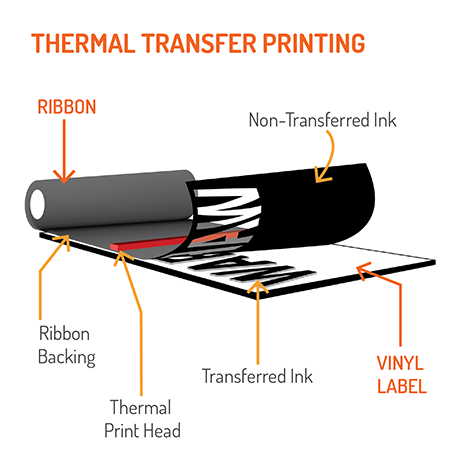
The main advantages of industrial thermal printers include durability, versatility, and low maintenance. They are specifically designed to produce long-lasting labels that withstand tough environments.
There are several reasons to consider an industrial thermal printer for your facility. Here are a few advantages of investing in a thermal printer:
- Durable: Labels and signs created with thermal printers are built to last. They withstand harsh environments, resist fading, and remain legible under a wide variety of weather conditions, making them far more durable than those printed with ink. This durability ensures that your labels and signs maintain their integrity and clarity over time, even in extreme conditions.
- Versatile: Thermal transfer printers excel in versatility. They can produce a diverse range of documents, labels, and signs tailored to meet various needs. Whether you need durable arc flash labels, detailed and vibrant floor markings, or labels designed to endure extreme conditions like cold storage, thermal printers deliver reliable results. This adaptability makes them ideal for a wide array of applications in different industries.
- Less maintenance: Thermal printers are engineered for longevity and reliability. With fewer moving parts compared to inkjet printers, they require less frequent maintenance and are easier to service. This translates to reduced downtime and lower overall maintenance costs, ensuring that your operations run smoothly and efficiently. Their robust design and reliable performance make thermal printers a cost-effective investment for any facility.
What are the Limitations of a Thermal Transfer Label Printer?
While industrial thermal printers are reliable and durable, they can be more expensive upfront and have fewer color options compared to inkjet printers.
While industrial thermal printers offer many benefits, there are a few considerations to keep in mind.
- Cost: The materials used in thermal printing can be more expensive than those for inkjet printing, and even basic thermal printers may have a higher initial cost.
- Color choice: Thermal printers generally offer fewer color options and are limited in their ability to print high-quality photographs due to the constraints of wax and resin choices at high temperatures.
Despite these minor disadvantages, DuraLabel offers a thermal transfer two-color printer in the Kodiak Max and a variety of stock with different base colors that puts these worries to rest.
When Should You Use a Thermal Printer Instead of an Inkjet Printer?
Use thermal printers when durability, compliance, and efficiency are required—such as safety labels, floor marking, and pipe identification. Inkjet printers are better suited for short-term office or photo printing.
With so many printer choices and label standards, it can be tough to know when one type of printer is better suited than the other.
Use an Inkjet Printer for:
- Office printing: Print basic office materials, like contracts, manuals, and emails.
- Photographs: Produce high-quality photographs.
- Temporary signage: Create short-term notices, announcements, and reminders designed for short-term use (such as a sign informing workers that a meeting has moved rooms).
Use a Thermal Transfer Printer for:
- Durable signs and labels: Create signs and labels that withstand extreme environments and meet OSHA and NFPA standards. This includes arc flash labels that highlight electrical hazards, marine signage designed to resist water and salt exposure, and safety signs for identifying hazards and providing instructions. These durable signs and labels ensure compliance with regulatory requirements and maintain their clarity and legibility over time, even in harsh conditions.
- Specialized visual communication: Generate custom visual communication tools tailored to your facility's unique needs. This includes magnetized shelving labels that can be easily repositioned, wire wraps that provide clear identification for cables and wires, and low-light visual aids that enhance visibility in dimly lit areas. These specialized solutions improve organization, streamline processes, and enhance safety by ensuring critical information is easily accessible.
- Floor marking: Boost efficiency and safety with custom floor marking signs. These markings can be designed to create clear pathways for foot and vehicle traffic, section off hazardous areas, and alert pedestrians to forklift traffic. With customizable options, you can design floor markings that fit your facility’s layout and safety protocols, improving overall workflow and reducing the risk of accidents.
- Pipe marking: Ensure compliance with precise pipe marking solutions that meet industry standards and regulatory requirements. These markers clearly identify the contents of pipes, flow directions, and other critical information, enhancing safety and operational efficiency. Durable and easy to read, these markings help prevent accidents and ensure that maintenance personnel have the information they need to work safely.
The versatility of thermal transfer printers in creating durable signs, specialized visual communication tools, floor markings, and precise pipe labels makes them indispensable in industrial settings. These printers excel in meeting stringent safety standards and enhancing operational efficiency across various applications.
As businesses seek to optimize their printing solutions, understanding the specific requirements and capabilities of different thermal printers is crucial. From selecting the right printer technology to evaluating features that align with your facility’s needs, navigating these choices ensures you find the perfect industrial label printer that enhances safety, compliance, and productivity.
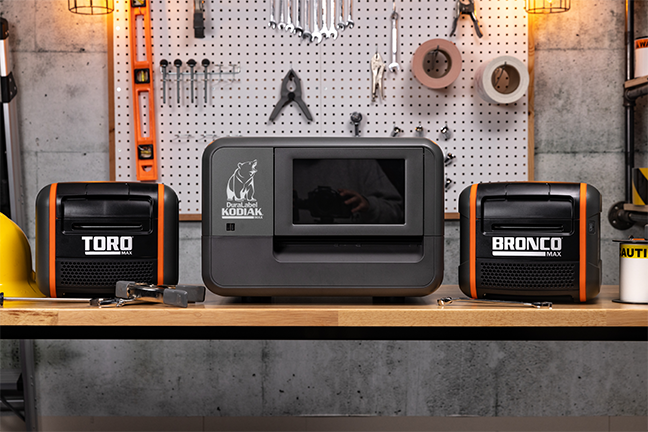
How Do You Choose the Perfect Industrial Label Printer?
Choosing the right industrial label printer depends on daily print volume, environmental conditions, and long-term costs. Facilities should evaluate these factors before selecting the right system.
With a myriad of options available, it's important to navigate the maze of choices wisely. Here are the key considerations for choosing the best label printer to meet your specific needs.
Volume Needs: Matching Capacity to Demand
The first step in choosing the right industrial label printer is to assess your volume needs. Consider the quantity of vinyl labels you'll need to produce daily. Are you printing a few labels or thousands? Select a printer that can handle your volume requirements without compromising on quality or efficiency. DuraLabel Kodiak Max is a one-stop print shop, Toro Max is fully portable, and Bronco Max is an efficient, dependable workhorse. Whether it's high-volume production or occasional labeling tasks, matching the printer's capacity to your demand is essential for seamless operations.
Environmental Conditions: Adapting to the Work Environment
The working environment plays a significant role in determining the suitability of a sign printer. Consider factors such as temperature variations, humidity levels, exposure to chemicals, and UV radiation. Choose a printer that can withstand these harsh conditions, and print chemical resistant labels, without compromising performance or durability. Whether it's a dusty warehouse or a chemical-laden manufacturing plant, selecting a printer that is built to thrive in your specific environment is crucial for long-term reliability.
Cost Analysis: Beyond the Price Tag
While upfront cost is an important consideration, it's essential to look beyond the price tag and evaluate the total cost of ownership. Consider ongoing expenses such as consumables (e.g., labels and ribbons) and maintenance costs. Conduct a thorough cost analysis to ensure that the chosen industrial color label printer aligns with your budgetary constraints over the long term. Sometimes, investing a little more in a higher-quality printer like the Kodiak Max can result in significant cost savings down the line.
How Do Industrial Label Printers Improve Safety and Compliance?
Industrial label printers improve safety by creating clear, compliant warning labels and improve compliance by meeting OSHA, ANSI, and NFPA requirements. Compliance with regulatory standards stands as the cornerstone of a secure and healthy work environment. Industrial color label printers are indispensable allies in this endeavor, enabling organizations to meet regulatory requirements while mitigating safety risks. As part of your safety program, printers ensure compliance and enhance safety in the workplace.
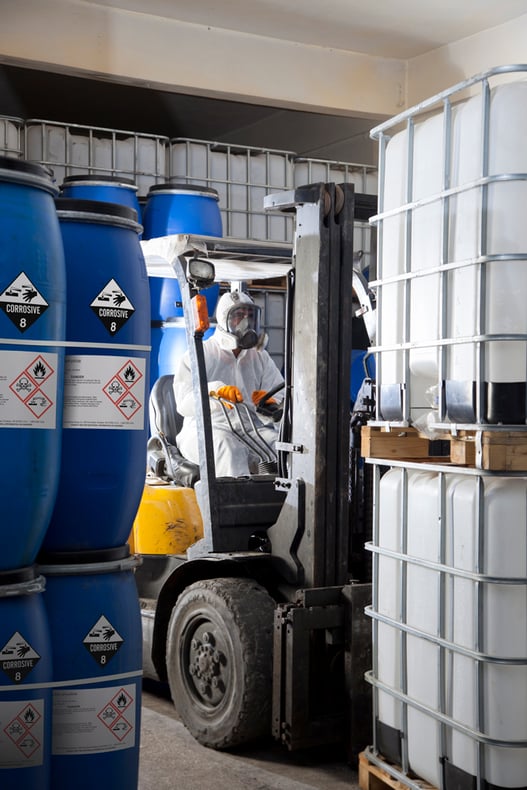
Clear and Visible Safety Labels
Sign printers are instrumental in producing custom safety labels that are clear, legible, and prominently displayed throughout the workplace. These labels play a critical role in providing vital information to workers, particularly in emergencies. Whether it's warning of potential hazards, providing instructions for safe operations, or identifying emergency exits, these safety labels serve as visual cues that guide workers and help prevent accidents.
By utilizing label printers to create clear and visible labels, organizations enhance communication and promote a culture of safety in the workplace. These labels serve as constant reminders of safety protocols and emergency procedures, empowering workers to make informed decisions and respond effectively to potential risks.
Navigating Safety Standards
In today's regulatory landscape, compliance with safety standards is non-negotiable. Industrial label printers play a crucial role in ensuring that organizations meet regulatory requirements set forth by organizations like OSHA and ANSI.
By producing labels that comply with regulatory standards, label and sign printers help organizations navigate the complex web of safety regulations with confidence. From the design and layout of warning labels to the selection of materials and adhesives, these printers ensure that labels meet stringent requirements and withstand regulatory scrutiny.
Empowering Organizations to Prioritize Safety
Industrial label printers empower organizations to prioritize safety and invest in proactive measures to mitigate risks. By providing the tools to create labels tailored to specific workplace hazards, these printers enable organizations to address safety concerns proactively and implement targeted safety solutions.
Moreover, these printers facilitate regular inspections and maintenance by producing labels that identify equipment, indicate inspection dates, and provide maintenance instructions. Organizations reduce the risk of accidents and promote a safe working environment for all personnel by ensuring that equipment is properly labeled and maintained.
Enhancing Safety Through Compliance
The thermal transfer label printer is an indispensable tool for ensuring compliance with regulatory standards and enhancing safety in the workplace. These printers play a pivotal role in promoting a culture of safety and mitigating risks by producing clear and visible labels and helping organizations navigate safety standards. As organizations continue to prioritize safety in the workplace, label printers will remain essential allies in safeguarding the well-being of workers and fostering a secure and healthy work environment.
Why Choose DuraLabel?
DuraLabel printers are designed for industrial safety and compliance, offering durability, software tools, and versatility across applications. Selecting the right printer is a critical decision that impacts both safety and efficiency in the workplace. By understanding diverse labeling solutions across industries, evaluating key considerations in printer selection, and staying abreast of emerging trends, organizations can ensure the safety and well-being of their workforce while optimizing operational performance. Label printers aren't just machines; they're guardians of safety and productivity in the modern industrial landscape.
Whether you need safety signs, pipe markers, or equipment labels—Toro Max and Kodiak Max are ready to transport anywhere you are. Get help crafting a system that will provide the safety communication you need. Call 1-888-965-3359 and one of our experts will guide you through the process.
For any application: safety, 5S, lean manufacturing, pipe marking, equipment labels, overhead signs, wayfinding, racks, shelves, bins, bilingual signs, and more, DuraLabel printers, with the powerful LabelForge Pro software, can provide instant visual communication.
Learn more about how to stay up to speed on signs and labels that can be used to help create a safer environment that leaves workers at ease knowing management cares. Download our free Facility Safety Handbook today.
Read Next:
Related Resources
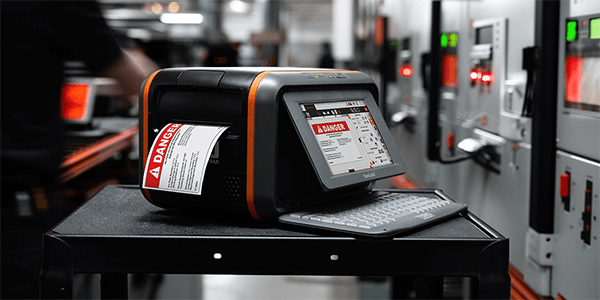
Top 10 Uses for DuraLabel Industrial Label Printers
How DuraLabel Printers are Used Across 10 Key Industrial Applications DuraLabel printers are built to solve ...
Read
What is HAZOP? HAZOP Analysis and Industrial Label Printer Insights
Workplace safety should always be at the forefront of your mind. Many recommendations exist on how to go ...
Read
Choosing the Right Industrial Label Printer for Your Business Needs
In the world of industrial labeling solutions, one size certainly does not fit all. Different businesses and ...
Read.png)

-png.png?width=1140&height=300&name=DuraLabel-OSHA_Pillar-Banner%20(1)-png.png)





